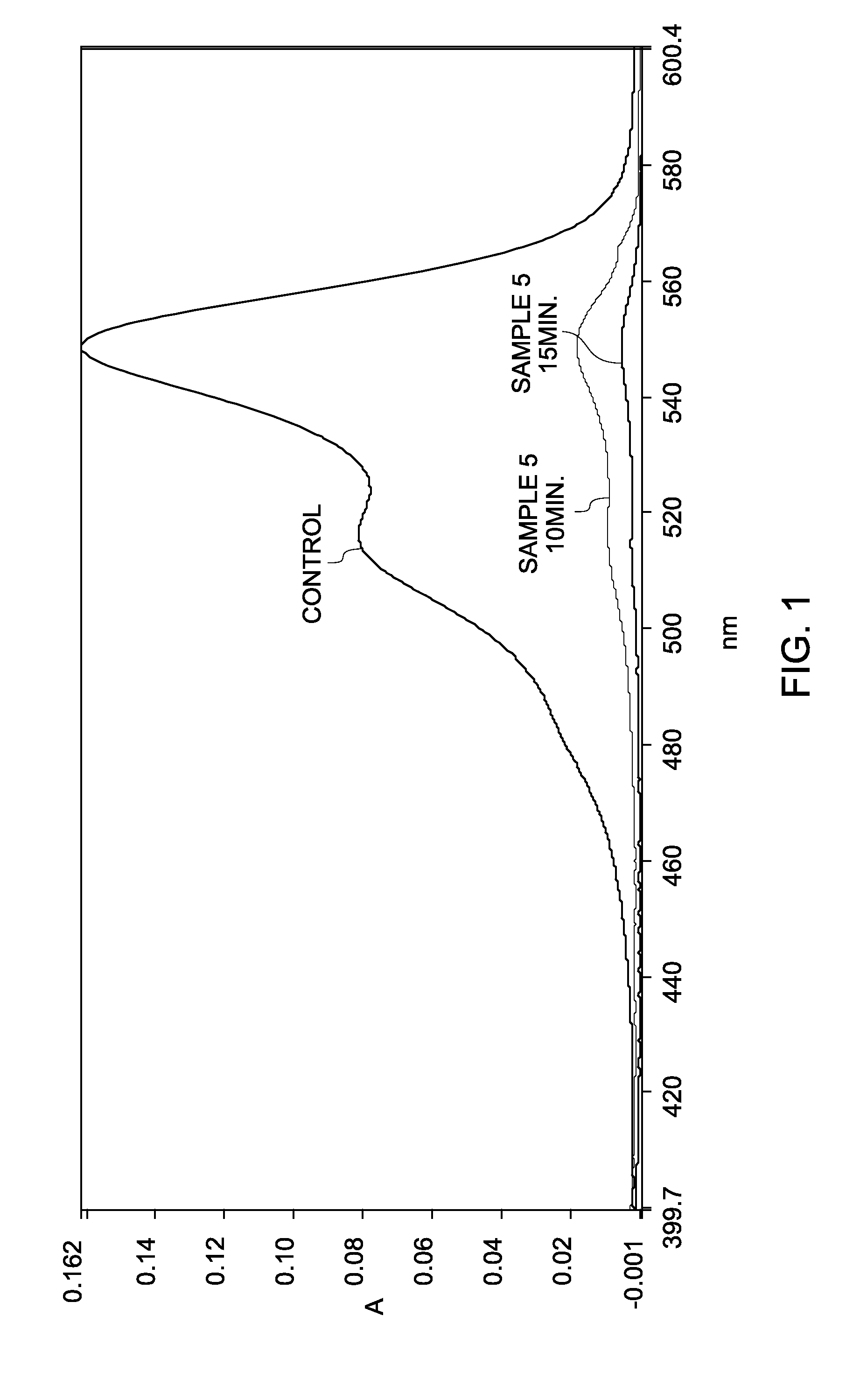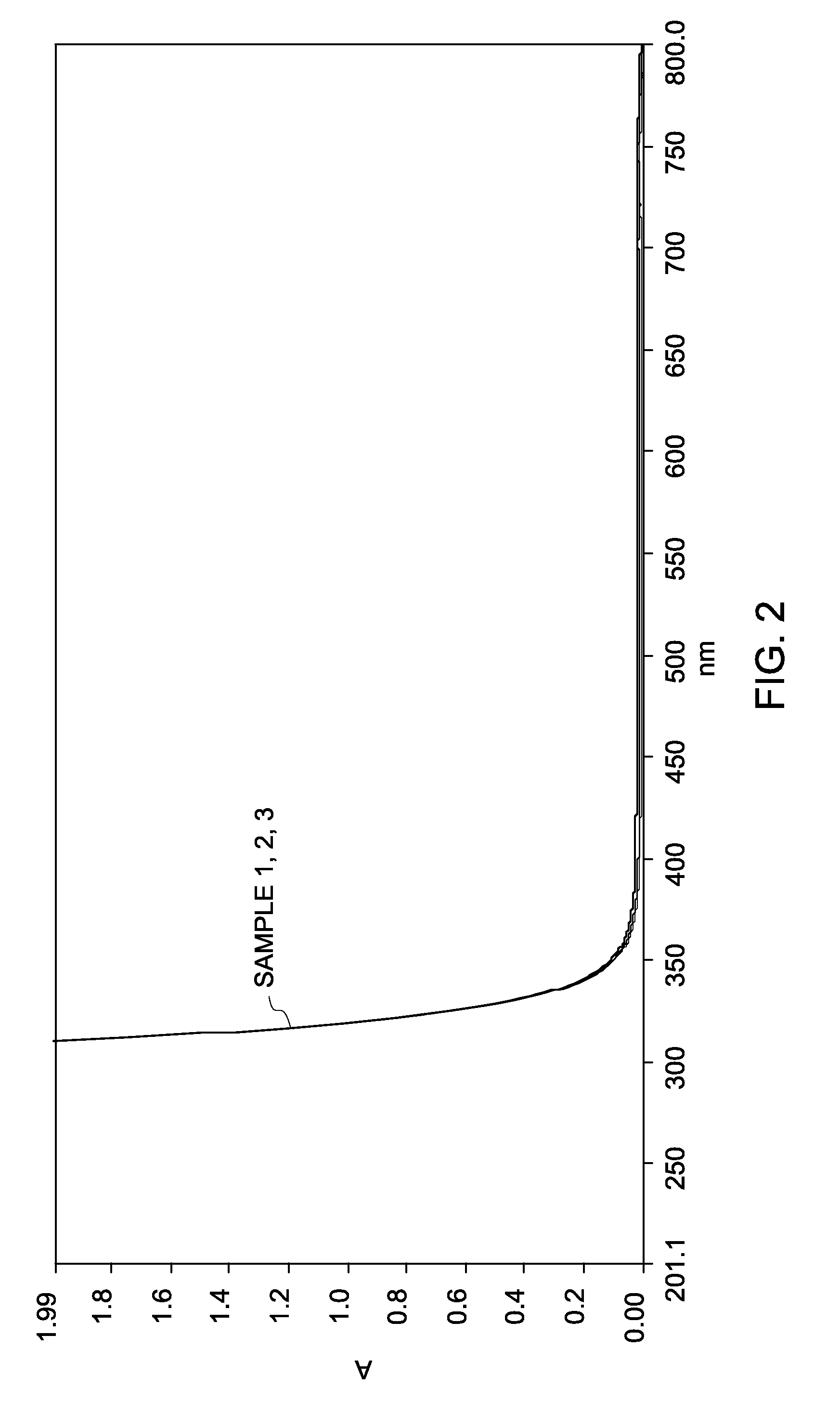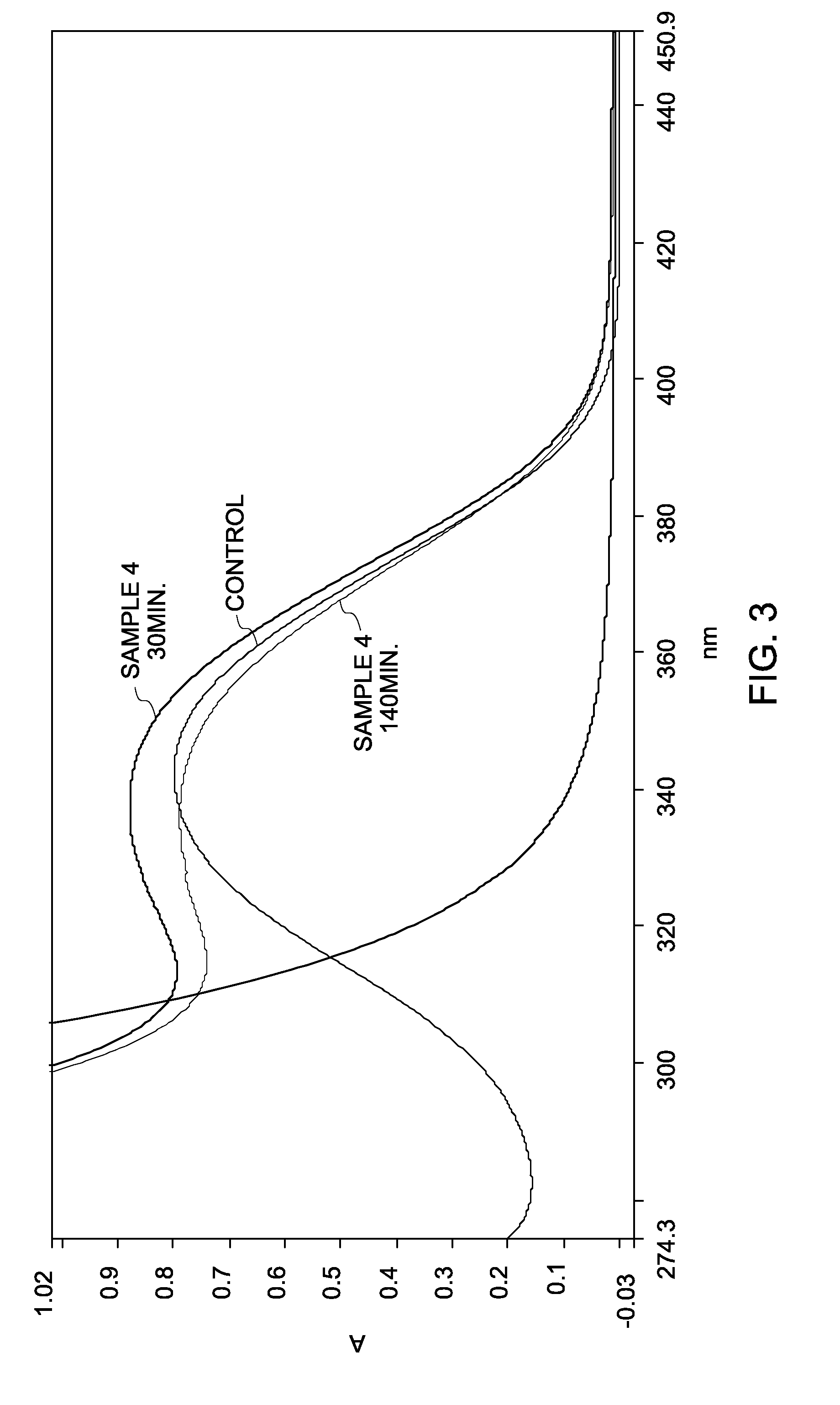Sequential analysis of biological samples
a biological sample and sequence analysis technology, applied in the field of sequence analysis of biological samples, can solve the problems of limited amount of sample available and limit the ability to determin
- Summary
- Abstract
- Description
- Claims
- Application Information
AI Technical Summary
Benefits of technology
Problems solved by technology
Method used
Image
Examples
example 1
Selective Oxidation Using Hydrogen Peroxide of Cyanine Dyes Without Affecting DAPI
[0141]A solution of hydrogen peroxide (H2O2) was prepared in a sodium bicarbonate buffer by mixing 1 volume of 1 molar (1M) sodium biocarbonate, 3 volumes of water, and 1 volume of 30 percent (v / v) hydrogen peroxide. pH of sodium bicarbonate was adjusted to a pH 10 using sodium hydroxide, prior to mixing with hydrogen peroxide.
[0142]Three separate solutions of cyanine dyes: Cy3, Cy5, and Cy7 were prepared in water at a concentration of about 2 micromolar (2 μM). An aliquot of a cyanine dye solution was mixed with an aliquot of the H2O2 solution to prepare a sample solution with a final concentration of about 3 volume percent H2O2 and 1 micromolar (1 μM) cyanine dye (Samples 1 (Cy3), 2 (Cy5), and 3 (Cy7)). A 1 micromolar (1 μM) cyanine dye solution in water (without H2O2) was used as a control.
[0143]Oxidation reaction of the cyanine dye was monitored by measuring absorbance spectrum of the dye on an ult...
example 2
Selective Oxidation (Using Sodium Periodate) of Cyanine Dyes Without Affecting DAPI
[0146]A solution of sodium periodate (NaIO4) was prepared by mixing a 0.2 molar solution of NaIO4 in 0.1× phosphate buffer saline (PBS). Three separate solutions of cyanine dyes, Cy3, Cy5, and Cy7 were prepared in water at a concentration of about 2 micromolar (2 μM). An aliquot of a cyanine dye solution was mixed with an aliquot of the NaIO4 solution to prepare a solution with a final concentration of about 0.1 molar (1 μM) NaIO4 and 1 micromolar (1 μM) cyanine dye (Samples 5 (Cy3), 6 (Cy5), and 7 (Cy7)). A 1 micromolar (1 μM) cyanine dye solution in water (without NaIO4) was used as a control.
[0147]Oxidation reaction of the cyanine dye was monitored by measuring absorbance spectrum of the dye on an ultraviolet / visible (UV / Vis) spectrophotometer as a function of time. FIG. 4 shows the absorbance spectra of Sample 5 as a function of wavelength, after duration of 20 minutes, 60 minutes and 210 minutes....
example 3
Selective Destruction (Using Sodium Hydroxide Base) of Cyanine Dyes Without Affecting DAPI
[0150]A NaOH solution was prepared at a concentration of 0.1M and 1M. Three separate solutions of cyanine dyes, Cy3, Cy5, and Cy7 were prepared in water at a concentration of 2 μM. An aliquot of a cyanine dye solution was mixed with an aliquot of the NaOH solution of two different concentrations of NaOH: 0.1M NaOH (Samples 9a, 10a, and 11a) and 1M NaOH (Samples 9b, 10b, and 11b). A 1M cyanine dye solution in water (without NaOH) was used as a control.
[0151]Base destruction of the dye was monitored by measuring absorbance spectrum of the samples as a function of time. FIG. 7 shows the absorbance spectra of Samples 9a, 10a, and 11a as a function of wavelength, after duration of less than 5 minutes. The absorbance value of Sample 9a did not vary much and a significant amount of Cy3 remained intact when compared to the control. Sample 10a showed a 20 percent decomposition of the Cy5 dye, while Samp...
PUM
| Property | Measurement | Unit |
|---|---|---|
| wavelengths | aaaaa | aaaaa |
| wavelengths | aaaaa | aaaaa |
| temperature | aaaaa | aaaaa |
Abstract
Description
Claims
Application Information
 Login to View More
Login to View More - R&D
- Intellectual Property
- Life Sciences
- Materials
- Tech Scout
- Unparalleled Data Quality
- Higher Quality Content
- 60% Fewer Hallucinations
Browse by: Latest US Patents, China's latest patents, Technical Efficacy Thesaurus, Application Domain, Technology Topic, Popular Technical Reports.
© 2025 PatSnap. All rights reserved.Legal|Privacy policy|Modern Slavery Act Transparency Statement|Sitemap|About US| Contact US: help@patsnap.com



